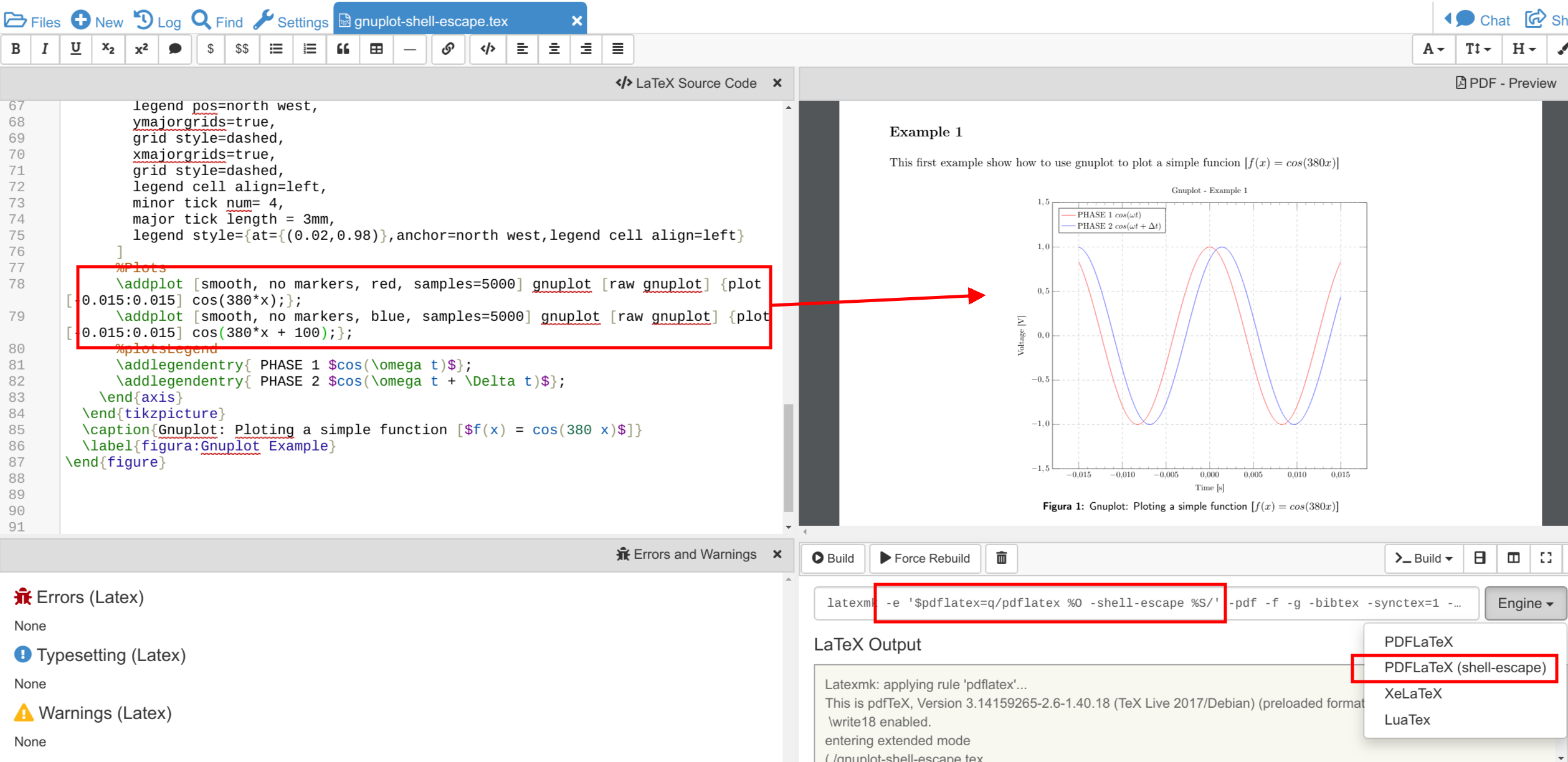

- #Compile latex file linux command line how to#
- #Compile latex file linux command line pdf#
- #Compile latex file linux command line update#
- #Compile latex file linux command line full#
- #Compile latex file linux command line download#
If you don't want to compile the documents, you can instead just get the book, the main.pdf document.
#Compile latex file linux command line pdf#
The source documents in the GitHub repository will allow you to compile the LaTeX documents in order to generate the PDF book called main.pdf.
#Compile latex file linux command line download#
Since the book is in PDF form and shared as a github project, this article provides a summary of what you get when you clone my github project or when you simply download the book itself.

#Compile latex file linux command line how to#
How to get the PDF book without compiling Network processesĪ brief introduction to TCP and UDP. The Big SqueezeĪrchive and compression tools: zip, tar, gzip, zgrep. Chapter 12 dnfĭnf is the package manager for Fedora, CentOS, and Redhat. I also cover the top, htop, and atop monitoring tools. I also cover the topic of modifying the priority of processes using the nice and renice commands. I cover the ps, pgrep, kill, killall, and pkill commands. I provide illustrations of these commands: useradd, userdel, usermod, passwd, chage, groupadd, groupdel, and groupmod. The topics covered include creating, deleting, modifying, and disabling users as well as groups. I provide illustrations of how to delete and insert lines and remove duplicate lines. The use of for loops and test commands are covered. This explores in more depth the topics introduced in Chapter 6. I discuss the getfacl and setfacl commands and provide many examples. I provide a brief overview of these topics and how to set and modify these features. This chapter explores many of the daily task that a system administrator faces when searching for documents containing specific text. I then cover working with columns, windows, indenting, marking, and creating a custom. I also cover moving, deleting, substituting, and searching for text. I explore vi's three modes: vi, insert, and ex. I discuss the difference between vim-minimal and vim-enhanced. As well, I discuss how to view manpages as html, creating PDF documents from the manpages and printing manpages. Alternatives to the manpage are explored: -help, emacs, info, and coreutils.
#Compile latex file linux command line full#
As an illustration of some of the concepts covered in the previous chapter, I write about how to extract specific information from manpages instead of simply calling the full manpage. This is an rather deep exploration of how to use manpages as an aid to understanding the command line. This chapter follows on the previous chapter discussing such topics as: exit codes, redirecting stdout and errors, test constructs, here string and here documents, IFS, EOF, calling functions, variable names and shell levels, as well as continuing the discussion on the use of different parenthesis. For example, I write about the use of quotations, backticks, parenthesis, spaces in file names, file name expansion, regex, grep, command substitution, and variable evaluation when using single and double quotations. As well, I begin to explore the topics that frustrate new users to world of Linux. I cover the basics of how to compile a LaTeX project and some of the challenges of typesetting code. My intention was to get the reader's attention. This is a an attempt to provide context as to why I chose to write about the Linux command line. The book has the following chapters: Chapter 1. The biggest difference will be that Debian based systems use apt as a package manager whereas Fedora uses dnf. However, most commands should work on Debian based systems such as Ubuntu. This book was written on Fedora 23/24/25. As well, the book should also be helpful to junior Linux System Administrators wishing to improve their understanding of scripting and working at the command line. My intention was to create a high-quality typeset book that covers many topics that will appeal to those new to Linux and new to the command line. I wrote this book using the LaTeX typesetting system, thus the title of this article is: Writing about Linux System Administration using LaTeX. If you become proficient at the command line, you will have mastered an important piece of becoming a Linux System Administrator. This article is principally about one thing: working at the command line using Linux builtin commands and Gnu Coreutils. A Latex Compiled Document on Linux System Administration using the command line for the revisions needed to get main.tex to compileĬorrectly.

#Compile latex file linux command line update#
I began an update on Maworking on a Fedora 33 build. Writing about Linux System Administration using LaTeX Revisions


 0 kommentar(er)
0 kommentar(er)
